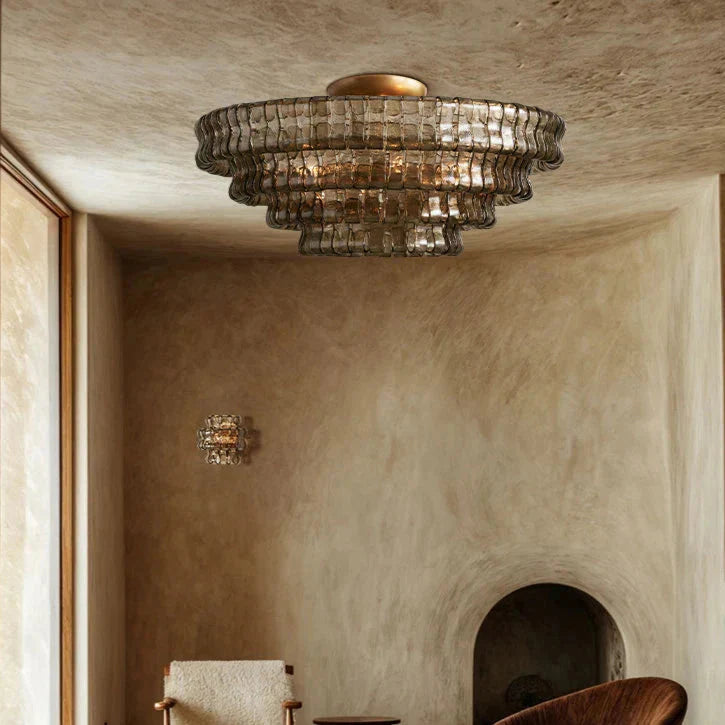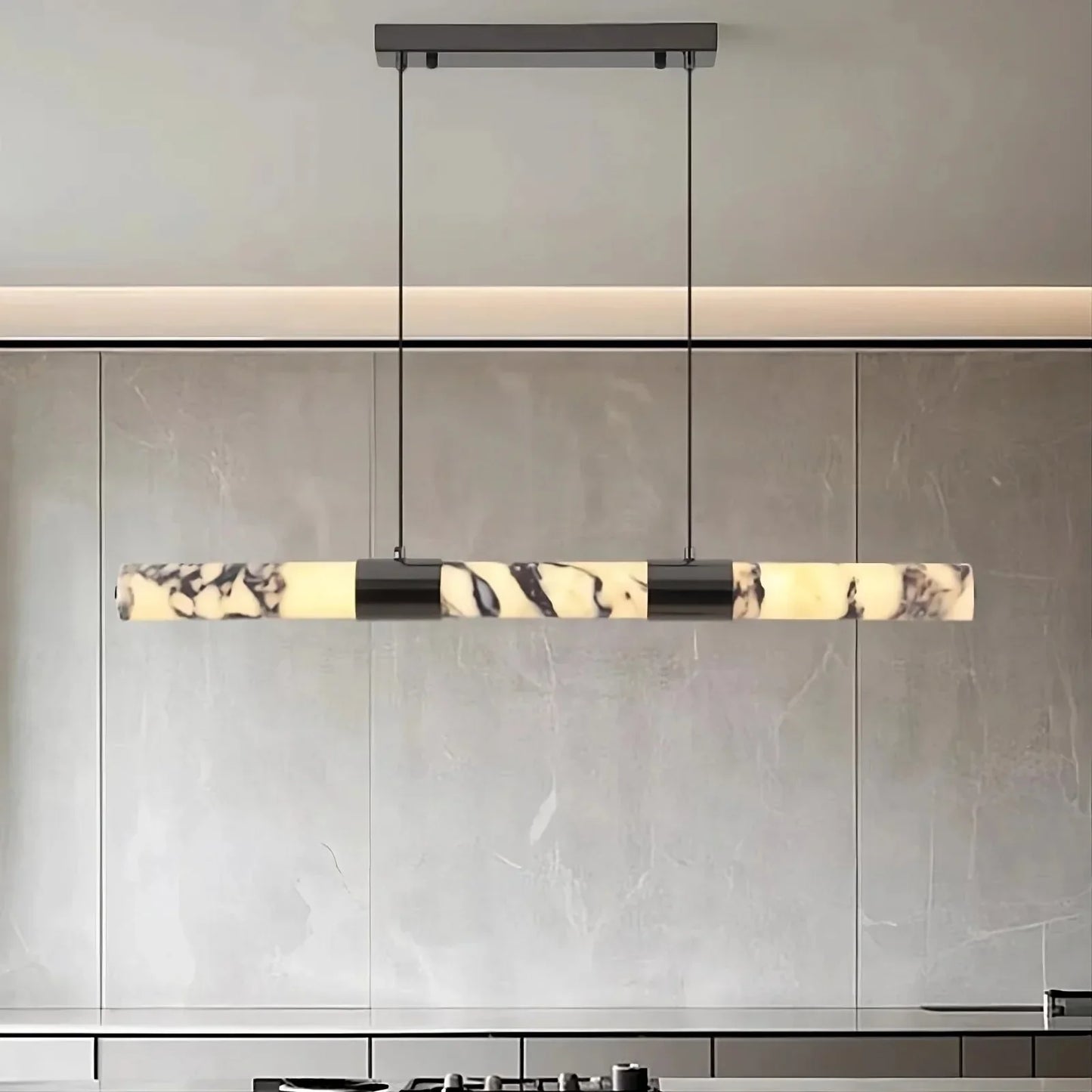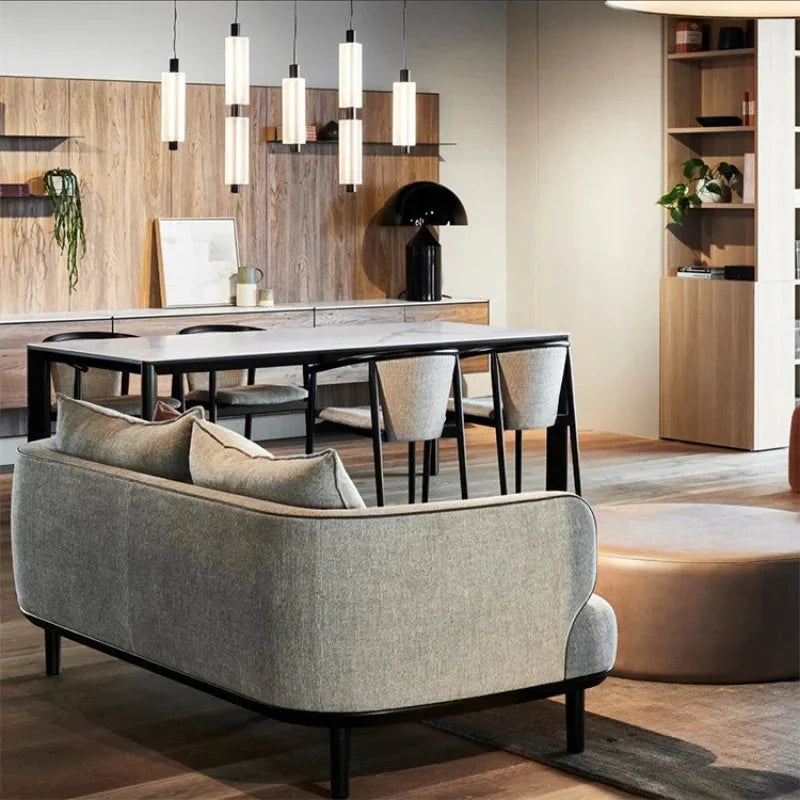Understanding Different Types of Ceiling Lights
There are numerous types of ceiling lights, each serving distinct functions and aesthetic appeal.
- Chandeliers: Offer elegance and are suitable for dining rooms and foyers.
- Pendant Lights: Versatile and ideal for kitchens and dining areas.
- Flush Mount Lights: Best in rooms with low ceilings, providing general illumination.
- Semi-Flush Mount Lights: Hang slightly below the ceiling, combining style and practicality.
- Recessed Lights: Built into the ceiling, perfect for minimalist designs.
- Track Lighting: Customizable and ideal for highlighting artwork or specific areas.
Choosing the right type depends on the room's purpose, style, and ceiling height.
Determining Your Lighting Needs
To choose the right ceiling lights, it's crucial to determine the lighting needs for each room. First, consider the room's primary function. Bedrooms need softer lighting for relaxation, whereas kitchens and offices require brighter, more focused light.
Consider the following:
- Room Size: Larger rooms may need multiple fixtures or higher wattage bulbs.
- Existing Natural Light: Rooms with ample sunlight may need fewer or dimmer fixtures.
- Ceiling Height: For high ceilings, consider chandeliers or pendant lights; for lower ceilings, opt for flush mounts.
- Task Areas: Identify specific areas needing focused light, such as reading nooks or countertops.
Taking these factors into account will ensure optimal illumination.
Assessing Room Dimensions and Ceiling Height
Proper assessment of room dimensions and ceiling height is crucial when selecting ceiling lights. Key factors include:
- Room Size: Measure the length and width of the room. Larger rooms require more powerful light fixtures.
-
Ceiling Height: Categorize ceilings as low, standard, or high:
- Low Ceilings: Opt for flush or semi-flush mounts to save space.
- Standard Ceilings: Use chandeliers or pendant lights for style.
- High Ceilings: Choose larger fixtures or tiered designs for visual impact.
- Room Function: Align light intensity and fixture style with the room’s intended use.
- Proportionality: Ensure chosen lights complement room scale without overwhelming it.
Accurate measurements ensure optimal light fixture selection.
Considering Light Bulb Types
Choosing the right light bulb type is crucial for achieving the desired illumination and atmosphere. There are several options available:
- Incandescent Bulbs: These offer a warm, soft light but are less energy-efficient and have a shorter lifespan.
- Halogen Bulbs: Provide brighter, whiter light similar to daylight, allowing for better color rendering. They're more energy-efficient than incandescents.
- LED Bulbs: Consume less energy, have long lifespans, and come in various color temperatures. They are cost-effective in the long run.
- CFL Bulbs: More energy-efficient than incandescent bulbs but contain a small amount of mercury, making disposal more complex.
Each bulb type has distinct advantages and drawbacks.
Exploring Styles and Designs
Choosing the right ceiling light involves considering the existing decor and desired ambiance. There are numerous styles and designs available:
Chandeliers
- Classic elegance: Adds grandeur to formal spaces.
- Modern designs: Sleek lines with minimalist appeal.
Pendant Lights
- Single pendant: Ideal for kitchens or dining areas.
- Cluster pendants: Creates an artistic focal point.
Flush Mounts
- Low ceiling solution: Provides ample light without clutter.
- Decorative options: Available in various patterns and finishes.
Recessed Lighting
- Subtle and sleek: Integrated seamlessly into ceilings.
- Adjustable options: Allows for directional lighting.
Track Lighting
- Versatile: Adjustable heads for targeted lighting.
- Contemporary style: Fits modern and industrial themes.
Energy Efficiency and Environmental Impact
Energy-efficient ceiling lights minimize electricity consumption. LED lights are the top choice, using up to 75% less energy than incandescent bulbs. They last longer, reducing waste and replacement costs. Compact fluorescent lamps (CFLs) are another efficient option.
Environmental impact is a crucial consideration:
-
LED Lights
- Lower carbon footprint.
- No hazardous materials.
-
CFLs
- Moderate energy savings.
- Contains small amounts of mercury.
-
Smart Lighting
- Automated control.
- Optimizes energy use.
Choosing energy-efficient options aligns with sustainability goals and reduces utility bills. Proper disposal of bulbs is essential to prevent environmental hazards.
Installing and Maintaining Ceiling Lights
Ensure safety by turning off power at the circuit breaker before starting installation. Gather necessary tools: screwdriver, voltage tester, and wire nuts. Follow these steps to install:
- Remove old fixture: Unscrew and disconnect wires.
- Attach mounting bracket: Secure to electrical box.
- Connect wires: Match black to black, white to white, and ground wires.
- Install fixture: Attach securely to the bracket.
- Test the light: Restore power and confirm functionality.
For maintenance, dust regularly and replace bulbs with the proper wattage. Inspect wiring periodically to ensure safety and functionality.
Budgeting and Cost Considerations
Choosing ceiling lights involves considering various cost factors that impact the overall budget. Key aspects include:
- Initial Purchase Price: Prices can vary from affordable to high-end luxury options.
- Installation Costs: Professional installation might be necessary, adding labor costs.
- Energy Efficiency: Energy-saving fixtures may cost more upfront but save money in the long run.
- Maintenance: Some lights require more frequent bulb changes or specific cleaning methods.
- Replacement Costs: Consider the longevity and availability of replacement parts or bulbs.
"Balancing aesthetics and functionality with budget constraints ensures an optimal lighting choice."
Integration with Smart Home Systems
Modern ceiling lights offer seamless integration with smart home systems. Users should look for lights compatible with platforms like Amazon Alexa, Google Assistant, or Apple HomeKit. This ensures voice control, automation, and remote access.
Key Features:
- Voice Control: Adjust brightness or color through vocal commands.
- Automation: Set schedules for turning lights on or off.
- Remote Access: Control lights from anywhere using a smartphone.
- Energy Efficiency: Optimize usage to save power.
- Customization: Change lighting settings to suit different moods or activities.
Compatibility and ease of setup should be primary considerations for those seeking smart home integration.
Safety and Compliance Standards
Ensuring ceiling lights adhere to safety and compliance standards is crucial for both residential and commercial spaces.
- UL Certification: Verify that the fixture has a UL certification indicating it has undergone rigorous safety testing.
- Energy Efficiency: Look for ENERGY STAR ratings that denote adherence to energy efficiency guidelines.
- Construction: Ensure the materials used are fire-resistant and meet local building codes.
- Installation: Only qualified electricians should perform the installation to prevent electrical hazards.
- Wattage Limits: Always use bulbs within the recommended wattage to avoid overheating.
Strict compliance with these standards ensures occupants' safety.
DIY vs. Professional Installation
Deciding between DIY and professional installation involves multiple factors.
DIY Installation:
- Suitable for those with electrical experience.
- Cost-effective, avoiding labor costs.
- Offers personal satisfaction and customization.
Potential Challenges:
- Higher risk of errors.
- Requires proper tools and safety measures.
- Complex fixtures may prove difficult.
Professional Installation:
- Recommended for complex setups.
- Ensures compliance with electrical codes.
- Provides expert precision and safety.
Costs:
- Higher initial expense.
- Long-term savings through reduced risk of issues.
Decision Factors:
- Project complexity.
- Personal skill level.
- Budget constraints.
Maximizing Aesthetic and Functional Impact
Selecting ceiling lights that enhance both form and function is crucial. Consider the room’s purpose and style.
- Layered Lighting: Combine ambient, task, and accent lighting.
- Fixture Size: Scale light fixtures to room dimensions and ceiling height.
- Dimmable Options: Provide flexibility and control over lighting levels.
- Energy Efficiency: Opt for LED options for longevity and cost savings.
- Design Cohesion: Match fixtures with home decor for a unified look.
- Color Temperature: Warm lighting for relaxing areas, cool for workspaces.
- Smart Lighting: Integrate with home automation for advanced functionality.
A well-chosen ceiling light marries style with practicality, enhancing the overall environment.





